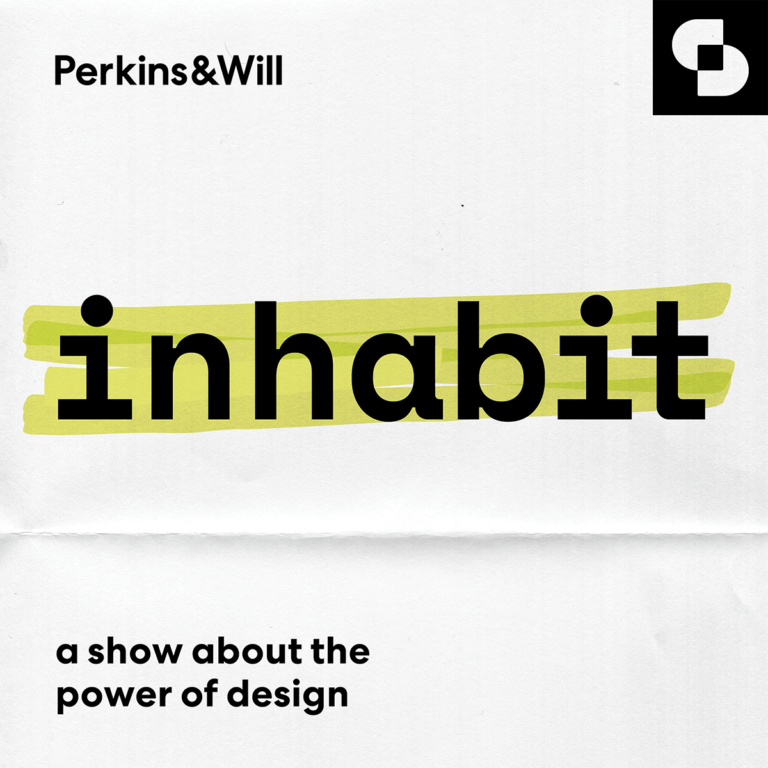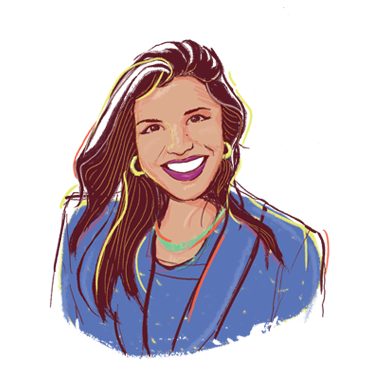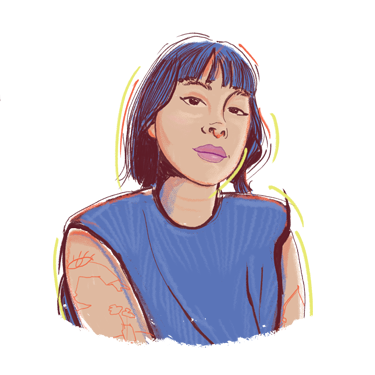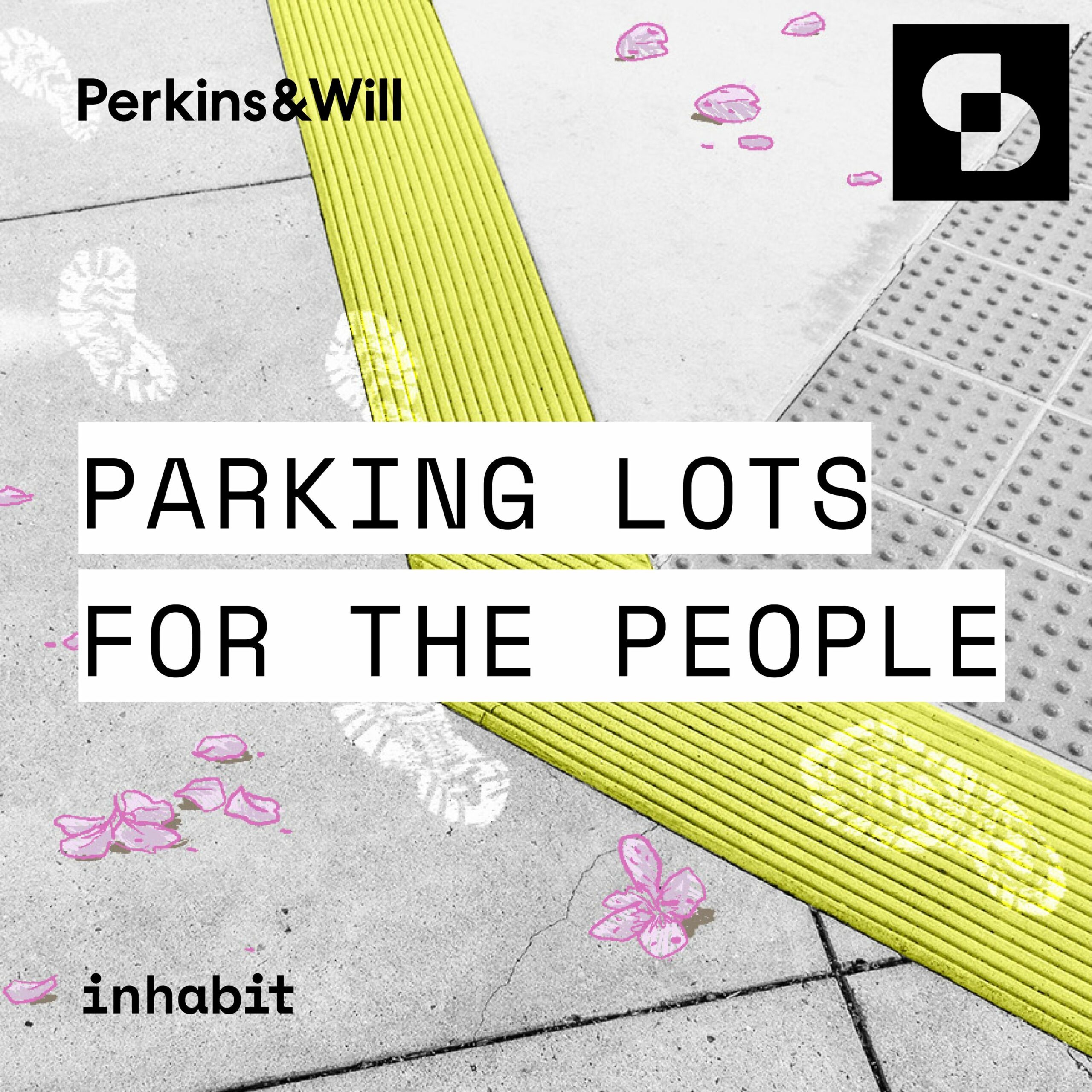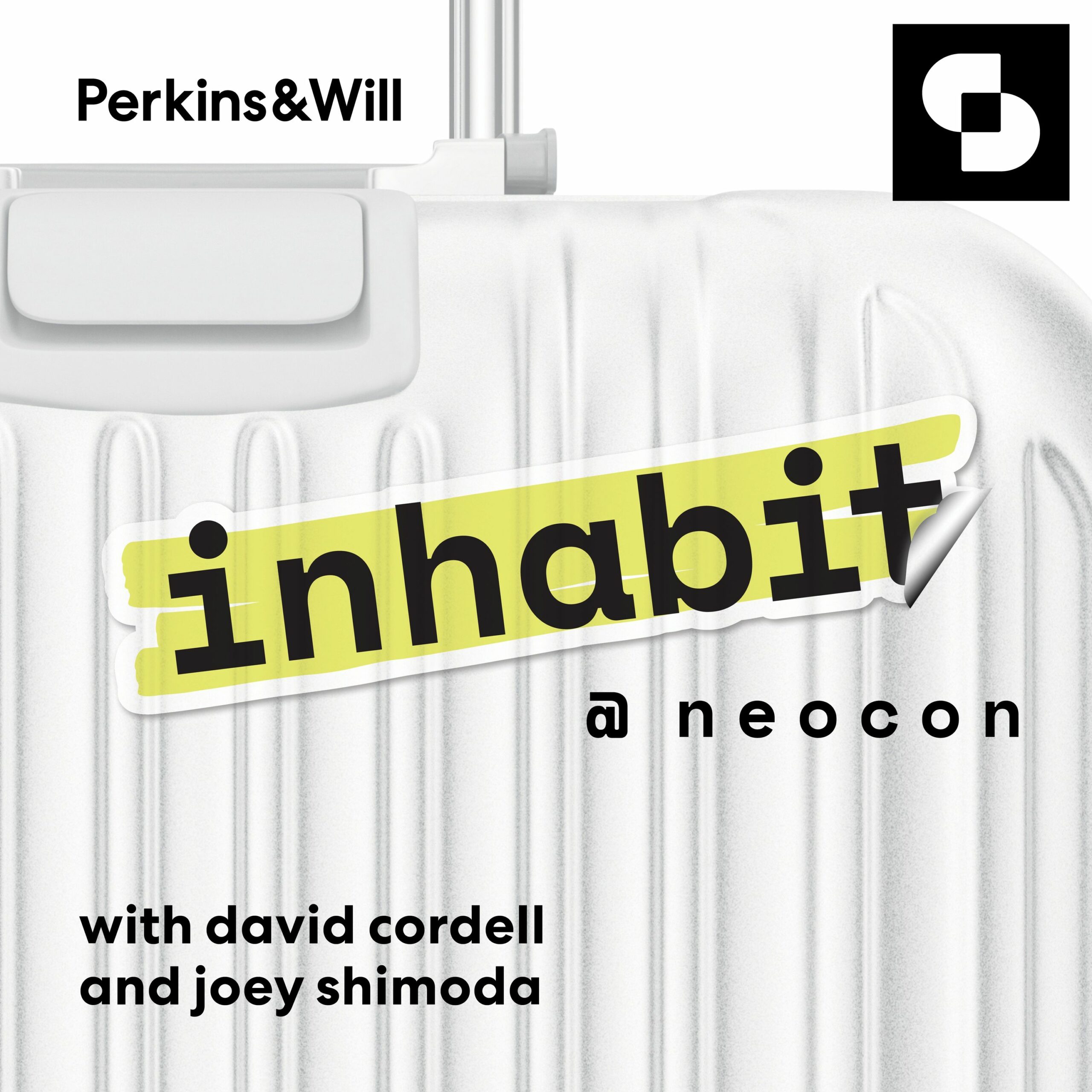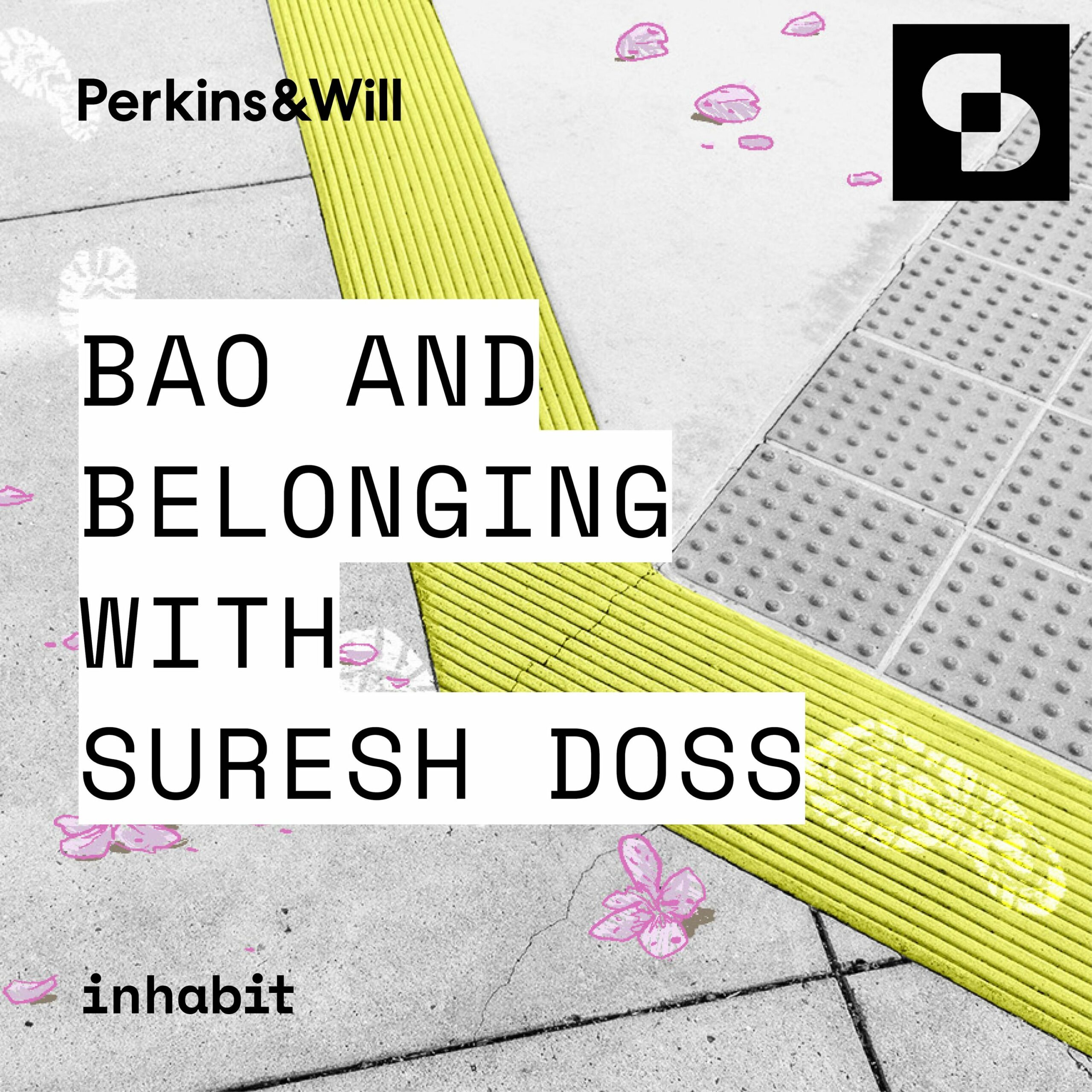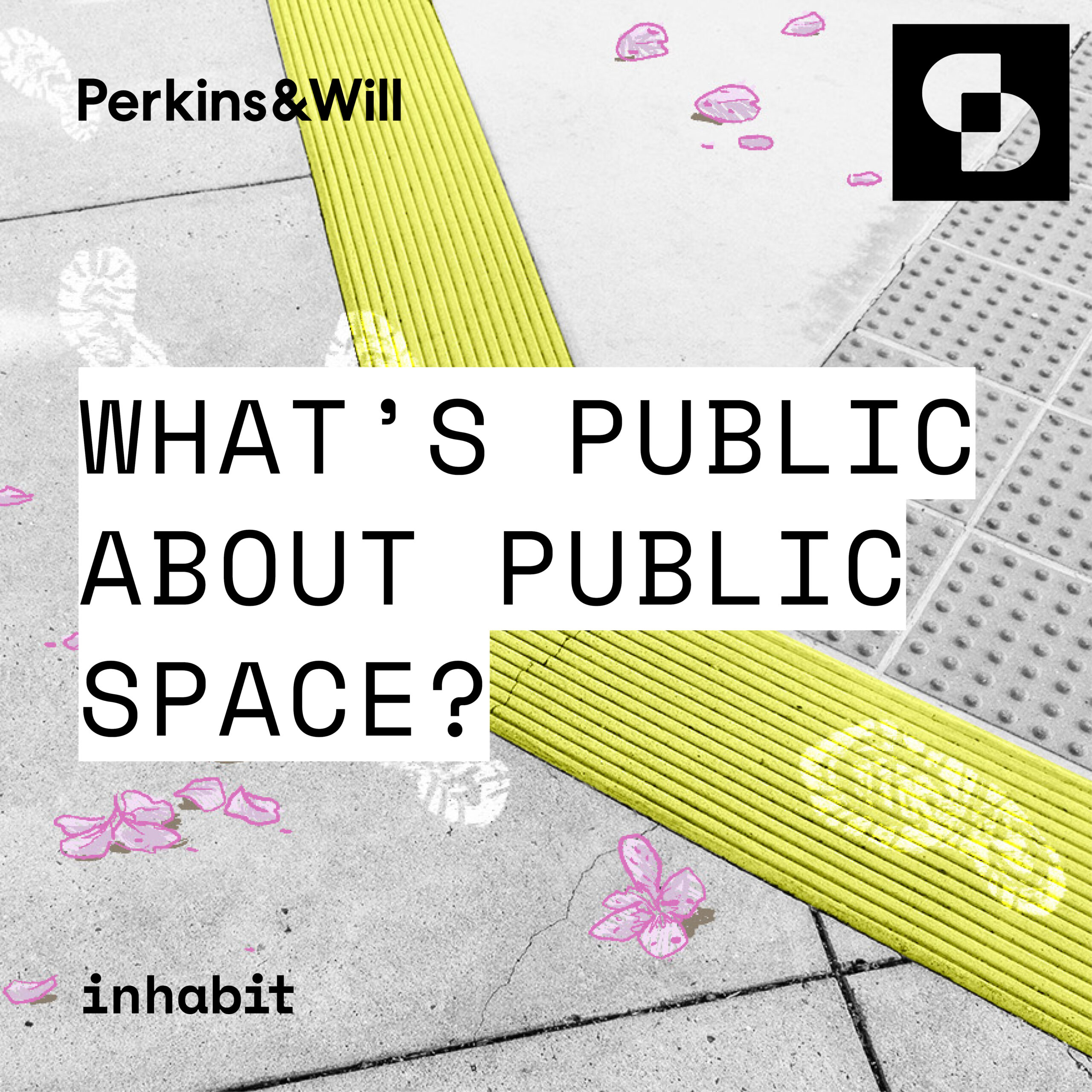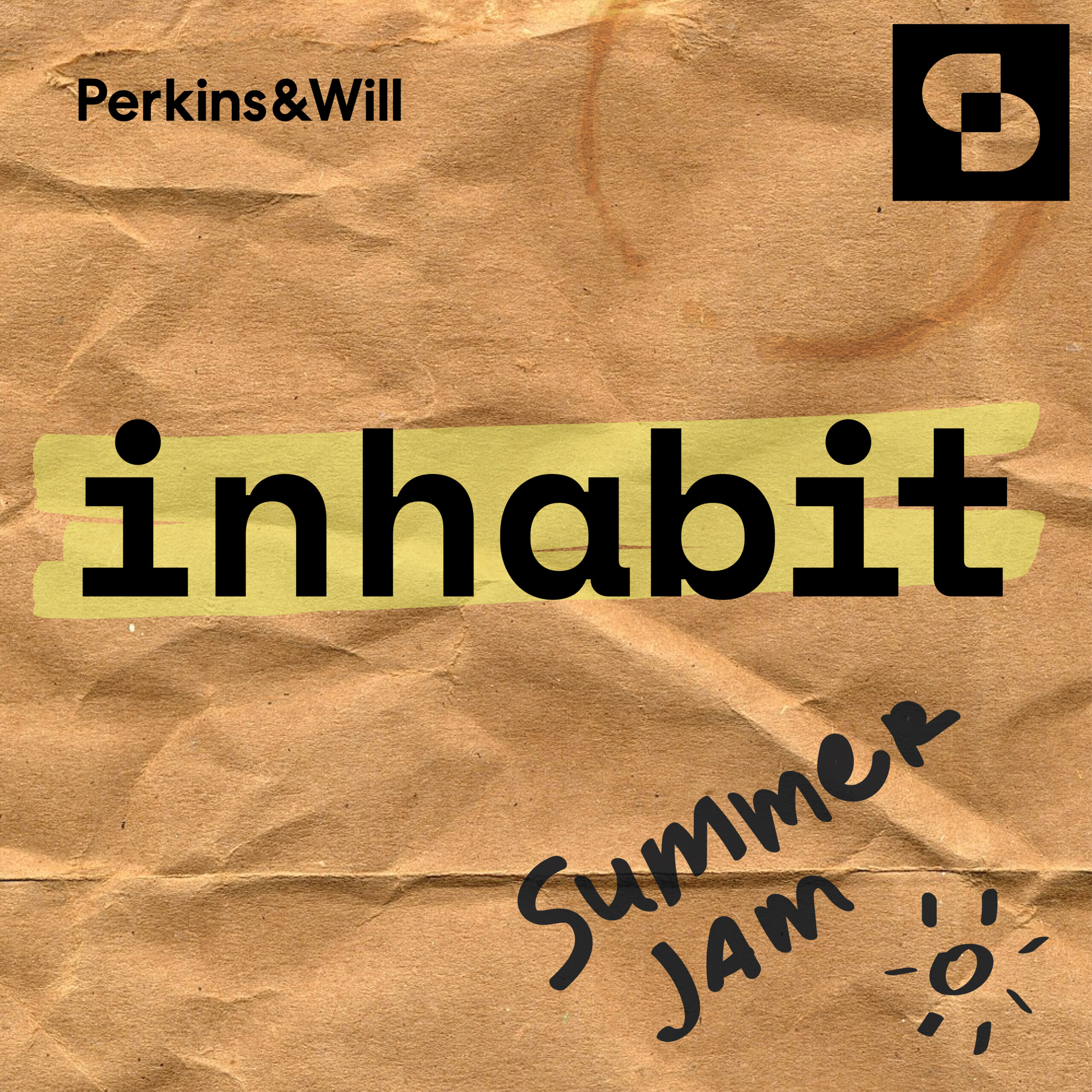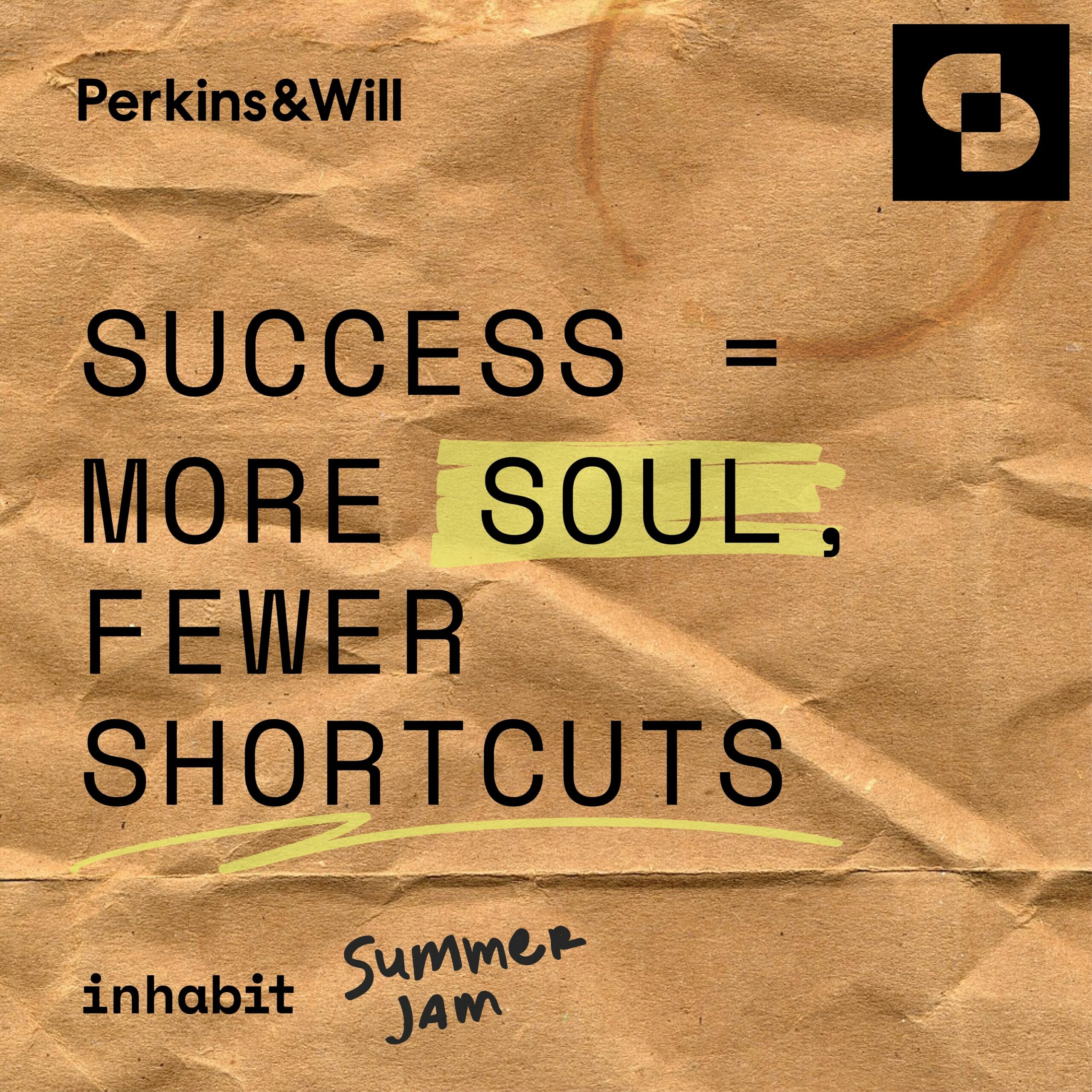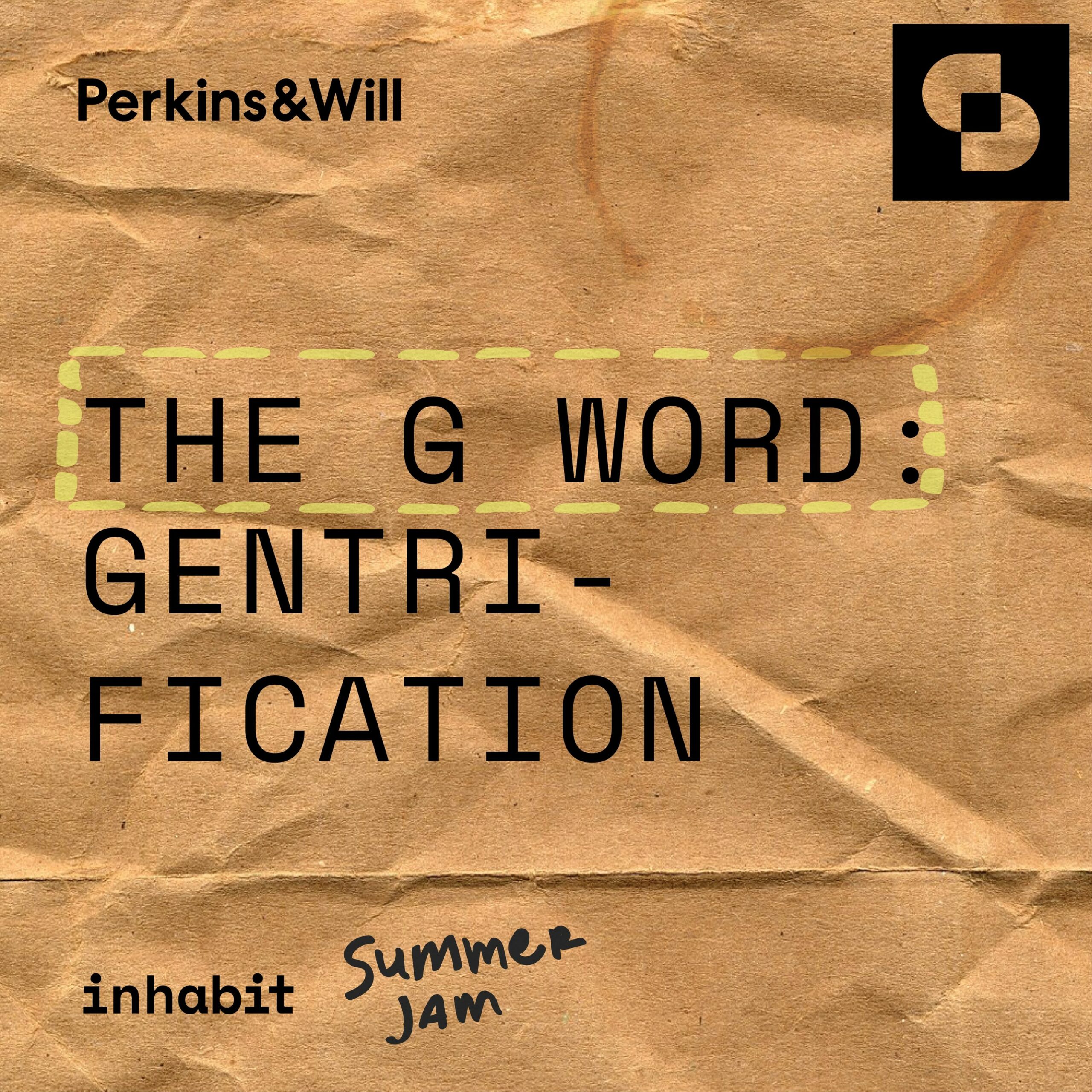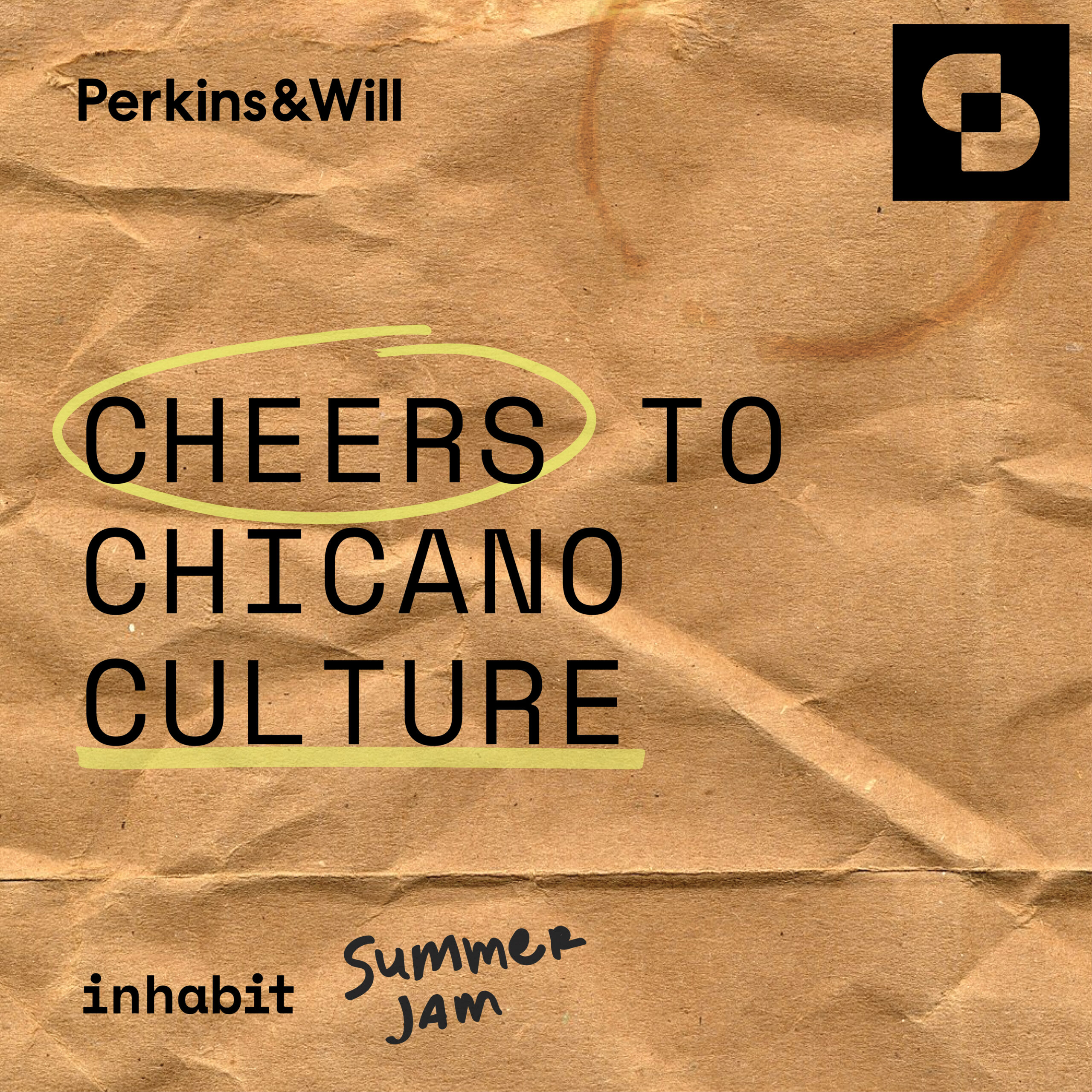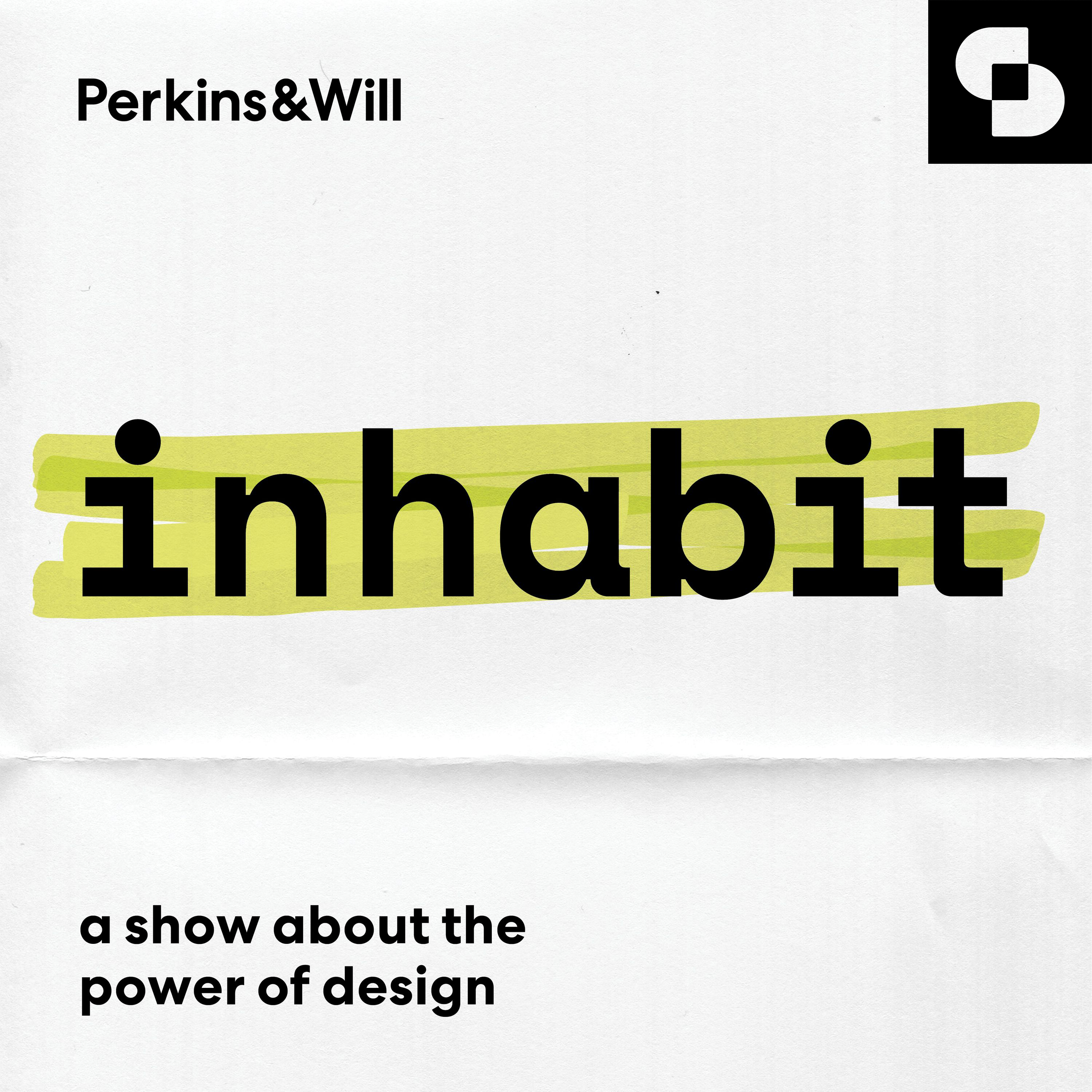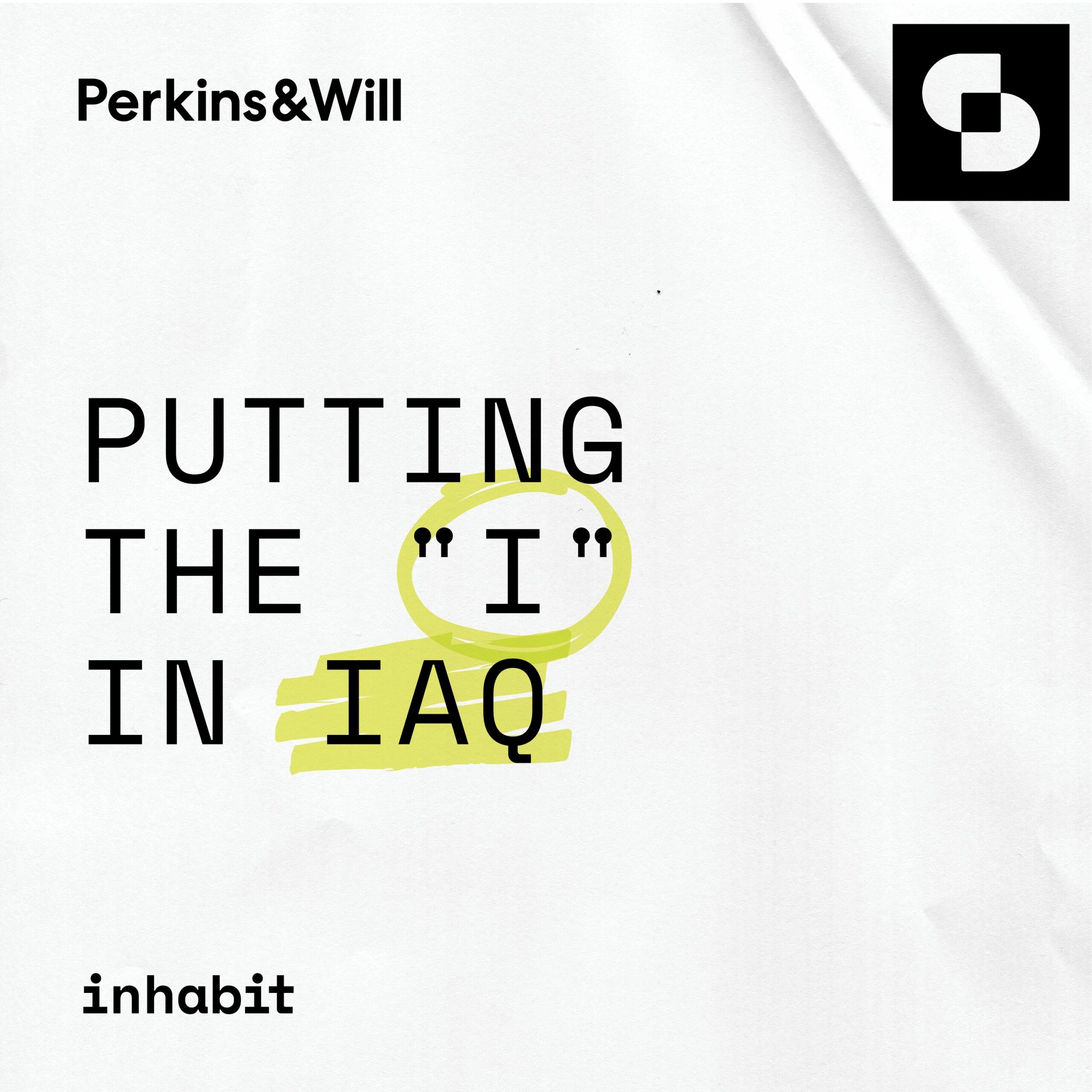Erika, Eunice, and Lauren continue their food tour of Toronto‘s North York suburb with food writer Suresh Doss. Inside Dream Yunnan Chòng’s new uptown location, they discover Suresh’s tech roots and get his hot takes on big data’s blind spots. Then Eunice’s mentor and family friend Dr. Zhixi Zhuang shares her keys to planning an emotional city. Also: the Internet of Things.
Inhabit is a member of the SURROUND Podcast Network.
Although the transcription is largely accurate, in some cases it is incomplete or inaccurate due to inaudible passages or transcription errors.
[low Inhabit rumble under “Dime a Dozen” (melody only) by Esme Cruz/Epidemic Sound]
Eunice Wong: [in studio]Hey Inhabit listeners. It’s Eunice. Well, Erika’s here too.
Erika Eitland: [in studio]Helloooo.
Eunice Wong: So this series we’re talking all about the ingredients of good public spaces and designing to preserve the authentic cultural places in our cities as they evolve.
Erika Eitland: Mm.
Eunice Wong: So I lured Erika and producer Lauren to my hometown of Toronto to see how design is and isn’t working in the most diverse city in the world.
Erika Eitland: Last episode, we took you on the first half of our food tour with food writer—
Eunice Wong: And cartographer and ethnographer—
Erika Eitland: Suresh Doss, who taught us how food culture evolves through waves of immigration and showed us that it’s possible to develop urban spaces without draining the juicy goodness out of immigrant communities. It’s even possible to support the cultural evolution that makes city life so delicious.
Eunice Wong: Look at that, Erika. You’re bringing it all back! [Erika: Mm.] So we first met Suresh in a North Toronto suburb called North York, and over lychee and tiramisu lattes [Erika: so good.] at a third-wave coffee shop called Another Land Coffee, Suresh told us about the food culture and the history of the neighborhood.[Erika:Magical.] So there have been these waves of Iranian, Korean, and Chinese immigrants that have made North York their home. They’ve gone to a university nearby, and they’ve really just created a delicious mosaic of food cultures. [Erika: Yes.] He then continued our tour along Yonge Street—
Erika Eitland: Yonge Street, the longest street in the world.
Eunice Wong: Yes. Correct. And we had yummy fried baos at another cozy restaurant called Sang Ji Fried Bao. And that place really felt like the home cooking and family dinners I had growing up. [Erika: Oh yeah.] Also, you know, as a nerdy urban planner, it was such a good example of how North York has evolved [Erika: Sure] but also allowed places like Sang Ji Fried Bao to, you know, grow into a bigger space [Erika: Mm.]and expand their whole business.
Erika Eitland: I love hearing that, because, Eunice, it was just like really powerful for us to share that with you. We’re so grateful that you brought us in and were so open. But let’s take you back to where we left off on this food tour in the last episode. We were sitting in Suresh’s car trying not to freeze.
Eunice Wong: We were also waiting for the owner of the next stop on our tour
“Dime a Dozen” (melody only) fades out and sounds of oil sizzling in the wok and a spatula scraping the pan fade in]
to open her kitchen for lunch. So I mean, I was a little distracted too.
Lauren Neefe: May I ask your name?
Sophie Guo: Sophia Guo.
Lauren Neefe: And this is your restaurant?
Sophie Guo: Uhhhh, yes. And with my partner. Yeah, we’re a partnership.
Lauren Neefe: How long have you been here?
Sophie Guo: Uh, for this location? Just, uh, since June … June.
Lauren Neefe: And you were somewhere else before?
Sophie Guo: Yeah, well Ihave another location in Downtown. Yeah, it has been a year for Downtown location.
Lauren Neefe: What made you want to open up here?
Sophie Guo: Oh, because a lot of our friends asking us to come here and it takes a long time to get to Downtown. The traffic.
Lauren Neefe: Do you cook the same things here and down there?
Sophie Guo: No, it’s different.
Lauren Neefe: Really?
Sophie Guo: Yeah, it’s a lot different.
[kitchen conversation cuts out abruptly]
Erika Eitland: [back in studio]But, OK. Hold on. Because this season Eunice and I promised we would consider design as our key to an emotional city,
[“Dime a Dozen” (instruments only)/Epidemic Sound slowly fades in]
we are going to finish up this tour with Suresh by talking about something, well, that doesn’t have emotions yet [Eunice: Yeeeeet.]—it’s a hot take—the role of digital technology and big data in design. The more we talked to Suresh about how he thinks about food culture in Toronto, the more we started to think “cultural osmosis” is like an emotional marinade—or a spice rub—[Eunice: High-pitched Mmmmmmm.] that technology really needs to develop a taste for. Stick with me here, Eunice.
Eunice Wong: OK. [giggles]
Erika Eitland: Technology increases its flavor—impact—when it authentically represents those who cook or eat that food. In design, we just call them “users.” But I feel like this is a little better.
Eunice Wong: [laughs] I get the point. Digital technology has already begun to shape urban design, right? There’s been all this buzz about “smart cities” [Erika: Oh yes.] and the parametric and computational modeling that, you know, does let us designers iterate. And even the fact—this is my favorite—that I can drop, you know, the little guy on Google Maps literally anywhere.
Erika Eitland: Oh, I love him. Them! Whoever they are!
Eunice Wong: [cackles] But they can, like, measure how wide a sidewalk is literally anywhere in the world. Blows my mind.
Erika Eitland: Crazy.
Eunice Wong: So tech is really changing the way cities are designed and built.
[“Dime a Dozen” (instruments only) fades out.]
Erika Eitland: Well, Eunice for me as like a humanist over here. I sometimes find the discussion of tech—just like the frenzy over AI
[“Rhubarb” (drums only) by Esme Cruz/Epidemic Sound cues in with drum roll.]
exhausting. [Eunice: Mmhmm.] We still haven’t universally removed lead from our drinking water. And yet let’s just [“Rhubarb” hand drums pick up again and xylophone melody stem cues in] chase some shiny solutions, everybody without solving existing problems, OK? But. Venting never solved anything. It might feel good, [Eunice giggles.] but listen: I’m hopeful that digital technology, when thoughtfully applied, can be used to optimize human-centered impacts. Just saying.
Eunice Wong: But that was also the incredible thing about this next meal with Suresh.
Erika Eitland: Always back to food with you.
Eunice Wong: [laughs]Yes. Well, Sophie, the owner, rolled up, welcomed us in, and as she began to set up the kitchen, we learned that Suresh actually had a background in the tech industry.
Erika Eitland: Yes.
[Pots and pans clatter in the kitchen as Erika, Eunice, and Lauren talk with Suresh at a corner table in the front. “Rhubarb” xylophone melody cuts out and hand drums stem continues.]
Suresh Doss: So prior to working in food writing, my career was in It, because my dad ran an IT school back home. So he opened one in Toronto when he moved here. So I spent a good amount of my teens growing up in Scarborough but moonlighting at his shop, learning how to build computers and like then eventually getting certification done in Microsoft certification programs, Cisco, and Novell. So, like, I was the youngest certified engineer at 17 or 18.
Erika Eitland: A different lifetime!
Suresh Doss: Now it’s an 8-year-old that’s probably got that….
Eunice Wong: [back in studio]So he has this deep connection and insight about what this emotion-less big data
[“Rhubarb” hand drums and xylophone melody fade in together.]
actually has to do with something as emotional as food culture and urban growth.
Erika Eitland: I think what was really fun for me is that we turned this small cubicle-size restaurant into our nerdy tech headquarters. [Eunice giggles.] Later in the episode, we’ll dive deeper into the tools designers can use [Eunice: Oh yessss.] to better understand cultural osmosis and unlock the power of culture in our communities.
Eunice Wong: And then we get to Cue the Nerds once again this episode. And we’ll talk to the very person responsible for me being an urban planner. Her name is Dr. Zhixi Zhuang, and her research on community engagement really is a call to action for us designers about what we all lose when we let the biases of our digital tools guide our process.
Erika Eitland: I’m Dr. Erika Eitland. I’m the director of the Human Experience Lab at Perkins&Will.
Eunice Wong: And I’m Eunice Wong. I’m an urban designer in the Ontario studio and a lifelong Torontonian. Welcome to my hometown! This is Inhabit.
[“Rhubarb” hand drums and xylophone melody fade cue out.]
Erika Eitland: OK, I’m ready for lunch. Let’s go.
Eunice Wong: Let’s go.
[Back in the restaurant ambience at the corner table with Suresh.]
Suresh Doss So we’re in this place called Dreams of Yunnan and the size of the restaurant is minuscule. You know, I refer to it as a cubicle-size restaurant. You can barely park a car in here. And there is exactly, what, there’s eight seats? six seats? So this is a very unique restaurant in the city. Like, as multicultural as we are—and we have all kinds of Chinese restaurants—a Yunnanese restaurant is pretty unique in terms of this really interesting cuisine that is very much doesn’t look like Chinese food, doesn’t taste like Chinese food. And I’m being mysterious for a reason. I want you to see it, because you’re like, Wait, what? And it opened maybe seven months ago. Still under the radar. Very little press. I don’t think anyone’s really covered it. So it kinda is flying under the radar. It’s cooking for the community, but, like, some really unique dishes.
[Spatula clatter and grease and vegetables sizzling in the wok.]
Suresh Doss; You can see the fire.
Eunice Wong: [back in studio] As those wok noises and smells filled the tiny room we were all sitting in, we asked Suresh about his food guide. [Wok sounds fades out.] He merged his tech background with his current goal of creating these micro communities through food, and he curated his own interactive map. So this is a resource of some of the tastiest restaurants for takeout around the Toronto area, including and maybe specifically those that you might not find on places like Google Maps or Yelp.
Erika Eitland: So we’re nerds. And naturally, we shifted our conversation into data visualization, [Eunice snickers.] technology, crowdsource information and marketing. Now we wanted to find the balance of qualitative and quantitative approaches to ensure an inclusive process and build environment.
[Back at the table with the pots and pans clattering in the kitchen]
Suresh Doss: With my line of work, like, I’m trying to physically go and eat at places and learn about the stories of how they ended up where they ended up and who’s behind them. So, like, if you think about that, kind of like reverse-engineering it, where do I find the data? And it’s certainly not necessarily on Yelp, because the business may not be listed there. And I’m in some cases ahead of press, so there isn’t an article or an interview online. So I’m flying blind. And typically, what that means is my only resource is Google Maps. So like, literally, I will drive to a part of the city, park my car, and like zoom in and zoom in and zoom in and look at that block and that block. And I find that in 9 out of 10 times, the maps never reveal the actual names of businesses in the area for a variety of reasons. Maybe they’re not white-owned, maybe they aren’t marketed, maybe they don’t have enough traction, maybe people aren’t reviewing it. So a Dream of Yunnan could be here for 10 years, but because the customers are not the kinds of tech-savvy customers that go and leave 5-star reviews, this person will not end up on Google Maps. And we can actually, we can test it out. [Eunice: Yeah.] We can, we can totally test it out. It’s like, there are businesses, but, like, you can zoom in and unless you type it in, you won’t be able to find it. So like, yeah, this is there now. But there are other examples where, like, you zoom in, and it won’t be there, but if you type in the name, it will show up. So I just find that problematic and discriminatory at some point, because someone designed this and someone designed [Eunice: The bias is built in.] Yeah, bias is built in, and so we’re repeating mistakes. And they designed it with a set of biases and a set of protocols and criteria that literally only allow certain kinds of businesses to pop up?
Erika Eitland: [back in studio]As two mapping enthusiasts, Eunice and I were having a moment reflecting on how mapping could be a paintbrush or an eraser. [Eunice: Hmm.] When we crowdsource information through Google reviews, the tech-savvy English-speaking voices may oversample restaurants more familiar to them. We may need to revisit how we define the foodie goodness of places like Dream of Yunnan. So we turn to a credible source—and I use that with air quotes—the viral TikTok influencer Freddie Wong, who argues that a 3.7-star review for a Chinese restaurant may be that sweet spot to have the balance of food, quality, service, timeliness, cleanliness…that gets you an authentic experience.
[At the table, pounding sounds in the kitchen. Sophie’s colleague presents a new dish. Eunice gasps.]
Sophie’s colleague: Sweet and sour fried eggs.
Lauren Neefe: Thank you.
Suresh Doss: This is what I was saying is when you look at it, you’re like, Wait a second. I am, like, somewhere in the Thailand peninsula or in Laos or in Burma or maybe parts of Indonesia, with the beach in the background and my feet in the sand. But I’m not in China, right? Like, it’s like, so it’s really a very unique kind of cuisine. So what we have in front of you is one of my favorite things to have here. It’s the fried egg salad. So you have this, like, this bowl of, of lettuce on the bottom with chunks of egg that have been fried in the wok, so like fried kind of with the yolk intact, and you have the lacing of the fried edges. And then you have whole rings of red onion. You have some papaya on top. You have some carrot. The sauce is a slurry of sweet, salty, and spicy. And there’s some tomato there. So what you’re seeing is, like, this idea of a lesson in crunch and texture and a ort of a dance of flavors.
Eunice Wong: Amazing.
Erika Eitland: A lesson in crunch.
Eunice Wong: A lesson in crunch. I’ll take that class.
Lauren Neefe: Thank you.
Suresh Doss: I think this is gonna be something you remember.
Eunice Wong: [back in studio] I now get why Suresh was excited to watch our reactions to this egg salad, because it was truly unlike anything I’ve ever tried. [Erika: Incredible.] And if it wasn’t for, you know, Suresh and his dedication to sharing these places with us, I don’t know if I’d ever get to experience this symphony of flavors. [Erika: Mmmm.] And actually, Erika, that’s sort of true with how some urban designers use technology today. [Erika: Oh?] So you know, we’re great at making maps [Erika: Ah. (snickers]] and reading maps. [Erika: True.] You know me. [Erika snickers.] But they can oversimplify what’s actually happening on the ground. [Erika: Oh totally.] So traditional mapping when it’s not curated by someone in the know, like Suresh in his food guide, it won’t consider intangible aspects like cultural significance or emotional value for the community.
Erika Eitland: I mean, maps make data visual and personal—which I love—but they are also visualizing the mapmakers’ biases. So I use the term bias because, from a research lens, we have to consider sampling bias [Eunice: Mmhmm.] when it comes to crowdsource mapping. For example, if we searched egg salad on Yelp, we would likely see the most ratings for a mayonnaise-based egg salad— [she beeps]—because we have a lower probability of individuals who know the crunchy, healthy magic of Dream of Yunnan’s egg salad actually exists. [Eunice: Yeah.] So it’s a numbers game—and it might not actually capture the full cultural experience, and it limits its generalizability to what people are rating versus all the great food out there. So we can’t use and leverage technology to help us without understanding the biases in that technology. The same is true when we think about search engines or AI tools. I’m sure if we Google a recipe of egg salad, it’s not going to tell us about this fantastic dish.
Eunice Wong: Wait, I kind of want to try.
Erika Eitland: OK.
Eunice Wong: Should we Google it?
Erika Eitland: Sure. All right.
Eunice Wong: Hey, Google. Tell me what an egg salad is.
Google Voice: According to Wikipedia, egg salad is a dish made primarily of chopped hard-boiled or scrambled eggs, mustard and mayonnaise and vegetables, often including other ingredients—
Erika Eitland: I was right.
Google Voice: —such as celery.
[Eunice chuckles.]
Erika Eitland: OK. So clearly Google missed—and I loved that, you know, they cited their sources [Eunice giggles]—but they missed the visual or edible magic of Dream of Yunnan. And it makes me wonder, Eunice, you know, how can the Googles of the world diversify the results to better reflect the cultural diversity Or just decolonize the search results? If history is written by the victors, then who writes our web-search results? Could finding these gems sooner, more easily help unlock innovations? Listen, if ChatGPT is a great aggregator and synthesizer, then we need a tool that unexpectedly sparks inspiration, reenergizes our tastebuds, reveals unexpected design precedents. You feel me?
Eunice Wong: Or—
Erika Eitland: Mmmm?
Eunice Wong: It simply just enriches our understanding of the world that we get to occupy.
Erika Eitland: A hundred percent.
[SURROUND mnemonic plays]
Eunice Wong: Quick interruption here. As a member of the Surround Podcast Network, we want to take a moment to share a whole collection of podcasts and people who speak our love languages of design, policy, and research.
Erika Eitland: But Inhabit is the only place you can get your gnome facts.
Eunice Wong: [Guffaws.] Yes, Erika. You definitely are the only one with the gnome facts. [Erika laughs.] Anyways, Design Nerds Anonymous is a podcast speaking our love language of research. We’ve been catching up on their miniseries about Gen Z’s impact on the design industry and—spoiler alert!—technology, data, and equity are all a part of that. And we’re getting super excited about the new season launching this fall.
Erika Eitland: You can learn more about Design Nerds Anonymous at surroundpodcasts.com.
[Inhabit snap echoes into empty room.]
Eunice Wong: OK, Erika. I don’t want to admit it. But I’ve heard that people missed our new segment Numbers, Names and ’Nomes from last episode.
Erika Eitland: Ohh! Do you know how much that means to me? [Eunice (laughing): I know.] It means people understand that both context and garden gnomes matter when we talk about public space.
Eunice Wong: [Erika whimpers] OK, we’ve been over this, but reminder—’Nomes also means ”nomenclature.”
Erika Eitland: [Eunice laughing]Yeah. OK, for some of us. I will not give up on my quest for GNOME appreciation. But without further ado, Inhabitants! Inhabiteers! Inhabititians! We present you Numbers, Names, and ‘Nomes.
Eunice Wong: OK, starting off with numbers. So we are recording this episode in July of 2023, and ChatGPT, this AI chat bot tool we all know, has been visited 1.6 billion times [Erika: Jeez.] in the last 30 days.
Erika Eitland: 30 days! Oh my god!
Eunice Wong: I know. And the average user spends 8 minutes on the website.
Erika Eitland: That’s it? I mean, honestly, though, I really wonder how many hours are saved due to those eight minutes. I’m just saying. Anyway, next up: Names. So we got George Box, a British statistician, known as one of the greatest statistical minds of the 20th century, stated in 1976: “All models are wrong, but some are useful.” In public health, we create advanced regression models to estimate the relationship between dependent and independent variables. For example, how many baos—independent variable—can I eat [Eunice snickers] until I unlock complete joy—dependent variable? In the statistical models, we control for race, socioeconomic status, or educational attainment, so we can answer more advanced questions like, what is the association between extreme heat and cognitive function in communities of color compared to their predominantly-white-neighborhood [Eunice: Mmmmm.] counterparts? But these models cannot fully answer these questions because we may not know about social cohesion of a neighborhood or the presence of air-conditioning or chronic conditions. So we need to explore continually to answer it fully.
Eunice Wong: I just learned something new. Thank you.
Erika Eitland: Well, wanna learn something else new? [Eunice: (sighs) Oh god.] I got a gnome fact for you. So garden gnomes [Oh god.] fell out of fashion during the world wars because of their association with Germany. But in the ’50s and ’60s, they were back and better than ever: mass produced, made of concrete, cheaper, smaller than their 3-foot predecessors—which is sort of terrifying—and the mass production took them from the Royal International Horticultural Exhibition to the suburbs. But through this, we may have lost the artistry of gnome culture.
Eunice Wong: OK, thank you. And back to our [Erika: Really? Really?] regularly scheduled programming, [Erika: OK.] Nomenclature. Sorry.
Erika Eitland: [sighs] I thought it was garden gnomes.
Eunice Wong: Our Nomenclature is the Internet of Things, or IoT. And it’s an essential component of smart cities and the evolution of technology embedded in our cities.
Erika Eitland: I have so many feelings about this word “smart.” Just saying.
Eunice Wong: Ugh,I mean, same, and smart cities are a hot topic, especially in Toronto. But these cities are only smart if we’re answering the right questions. So the Internet of Things is an intense network of computing devices that are actually embedded in our daily lives, from air-quality sensors to traffic or street lights. And the SmartAmerica Challenge imagines that the U.S. alone will invest $41 trillion in 20 years to upgrade all their infrastructure and embed these IoT devices into their processes.
Erika Eitland: That is wild. I have thought a lot about air-quality sensors and wearable devices like Fitbit. But this scale of data and investment is actually a real opportunity to impact human experience.
Eunice Wong: So I want us to think about this like a virtuous cycle. People are living in our public space and with the Internet of Things we can measure and monitor the quantity of people, pollutants, traffic…. But with an engaged design process, we can really then capture the quality of human experience. So then we can better measure joy, engagement, socialization, and belonging.
Erika Eitland: Oh,I love that. Tech can give us vast amounts of data, but humans are crucial in interpreting and validating that information, contextualizing it, identifying patterns and insights that tech algorithms may completely miss. Not to make this personal, but both of us have partners that are software engineers. [Eunice huffs.] And if our romantic partnerships can work, then I believe professionally we can advance our relationship with technology as human-centered researchers and designers.
Eunice Wong: You know, a Google map of restaurants in Toronto can be good, but Suresh’s insight and the trust that the community gives him is what takes it to that next stepl And no fancy algorithm can replace actually involving people and community in that process.
Erika Eitland: Speaking of humanizing design, this is our perfect moment to Cue. The. Nerds. [Eunice: Woo!] Our nerd in this episode is someone who effortlessly brings human emotion to the forefront of this industry. She speaks all of our love languages fluently—
Eunice Wong: And I am so grateful because our guest this episode is Dr. Zhixi Zhuang. She’s the graduate program director at the School of Urban and Regional Planning at Toronto Metropolitan University and the founder of DiverCity Lab. Her research is all about suburban retrofitting, placemaking, migration, ethnic entrepreneurship…. And she introduces tools that are not merely technology, but are strengthened by the human tools we all have: the ability to radically listen and to build trust with communities. So she’s a very important voice to include in this conversation, especially in the midst of all these immigrant food landscapes we’ve been exploring with Suresh.
Erika Eitland: Like every scientist, Dr. Zhuang answers questions with more, a fearless explorer crossing research boundaries. Her questions serve as our compass to the truth. So today, we Cue the Nerds with Dr. Zhuang to understand how we get to an authentic, inclusive planning process.
Dr. Zhixi Zhuang The process is more important than the outcomes. We talk about lip service and the tokenistic approach and what is considered the true community-engagement process and the more meaningful one, right? And we often think we are the experts. We conceive this space based on our imagination, how the space should be used. But in reality, newcomers, they bring in different cultural practices and different ways of use the space, different ways to express their cultural identities and, and their heritage. It’s so important to preserve that, um, and it’s intangible in many ways. But how can we support them and make this is really, like, their home? Sometimes I argue that a lot when we talk about Toronto, and basically people acknowledge that Toronto is one of the most multicultural, diverse—so-called diverse—cities in the world. But diversity doesn’t mean true inclusion, right? Diversity— You can measure diversity based on numbers, data, demographic data. You can show how many languages being spoken here and how many ethnicities in the demographics and— But does that really mean that people feel like this is an inclusive community or society? Do they feel like they are welcome? Do they feel they have equitable access to the resources, to services, to the support they need?
Eunice Wong: What Dr. Zhuang is saying here about measuring diversity is important. Yes, we can measure diversity by the numbers. I can throw census numbers into a mapping software like GIS, and it can spit out a hundred different maps and graphics to illustrate diversity. But those maps lack emotional understanding. And we did in the last episode drop the stat where we mentioned that Toronto has 51 percent of people born outside of Canada, but it doesn’t actually represent or say anything about inclusion. That 51 percent of people, do they feel included, accepted, or welcome here? So it’s important that when we use data—and, you know, Erika and I love a number—
Erika Eitland: Love a number—
Eunice Wong: We need to tap into our emotional and empathetic sides as well.
Erika Eitland: Yes, because design goes beyond data-driven solutions. [Eunice: Mmhmm.] It takes us, the humans, to ask how people want to feel in these spaces. What are the emotions, the memories….? Well, Dr. Zhuang gets into this.
Dr. Zhixi Zhuang: The relationship between space, place, and people—that is my core area of research and practice and, and teaching. Toronto really provides a very beautiful setting to get started with building connections with communities and learning from Indigenous histories and learning from the land, and hearing the voice of the land is so important. I’m really curious about how do we actually work together as settlers—we are all settlers—but how can we, uh, play our role, do our share, pay our respect? And how do we incorporate that into our daily practices?
Parkdale is one of my favorite neighborhoods. I used to take my students to do field observations in the neighborhood. Often I bring people from outside of the town to go to the restaurants, the momo places [Eunice: momo places!] there. And my students have done a lot of work in the area and observing their Wednesday-night summer dance and looking at how they converted a residential house into the Tibetan temple, for example. And also the agency of the local residents—the Tibetan diasporas—and how they play such a huge, significant role in preserving their rights and claiming their space through the creation of the community garden and through their activism, through their thriving businesses and through their intergenerational communication, trying to really cultivate these cultural traditions and also building this connection with the broader communities. I think that’s super, super important when it comes to the understanding of public spaces today, because it’s not just that physical setting, it’s not just, like, that blank space. But it’s the people who brings the meanings and adding the identities and constructing that space and turning them into places and meaningful places. But also that power, that agency is often unnoticeable.
Erika Eitland: Technology relies on an input that produces an output. It’s a one-way linear process. To contrast this, Dr. Zhuang is promoting a more reciprocal, two-way approach: Technology is helpful, but it has to be paired with listening.
Eunice Wong: And that reminds me of an article I read this week summarizing this tech conference that was happening in Toronto. [Erika: OK.] At this conference, there was a lot of talk—as always—about AI disrupting [Erika: Oh, of course.] the way we approach sustainability in this case. But this bubble was burst by an Indigenous activist, Autumn Peltier, the chief water commissioner for Anishinabek Nation, and she addressed the crowd to say the key to sustainability is actually listening. In 2023, technology may help, but it takes listening to our knowledge keepers and our elders. Dr. Zhuang gives a few more examples on how to do this listening.
Dr. Zhixi Zhuang: Every culture is so unique, and how do we actually learn from each other, so it’s not just like one-way integration: “You should do this and that,” “This is the norm,” but who set those norms? Who design? Who define? Who control? So the implication for us as the dominant class—like developers, policymakers, decision makers, designers, architects, planners, and professionals and experts—when we conceive the space, we often ignore how this space is actually perceived and lived by people, by the actual users. In our mindset, it’s like, “Oh, look at our master plan! We are providing a beautiful vision for the community! You should be happy!” Right? [laughs] But the outcomes are the opposite, right? If you don’t really know what they want, what people want and what they need in that space—and what for, right?—the most problematic thing is the actual users. They are silenced, because they are not properly consulted. Their needs are not appropriately understood and acknowledged and reflected in the design of the space. If we talk about actions for planners, for decision makers, for this dominant class, they need to be careful. Because it will end up in two scenarios. One is people are strongly against you, there’s a public outcry, there’s protesting, people want to kill this plan, right? Because it’s nonsense. It’s ridiculous. The other scenario is whatever the city wants to do, the professionals want to do, the experts wants to do this and that, it got ignored. Communities, they develop their own space and we, we have fun in, in this so-called informal placemaking, “illegal” space. And we have fun. We have joy because this really speaks to the needs of the users, of the communities. So the professionals, when they parachuting the plan onto the communities, it got ignored, right? We need to really be creative, but also think about what is the ultimate goal of doing design and planning for communities? How can we plan and design with communities to truly understand their needs and their lived experiences on a daily basis. Without that knowledge, it doesn’t make any sense. And as professionals, we also need to be mindful of developing cultural competency. developing cultural humility. It’s a lifelong learning. Be humble!—to learn from the communities and co-create the space together. It really requires a breakthrough in our conventional planning and design practices.
Eunice Wong: It has been an adventure this episode! From a food tour and nerd chats, we began radically rethinking our relationship with technology and food, but mostly our relationship with each other. [Erika: Yes.] Last episode, we asked what tools do we need to help unlock inclusion and representation in the public-space design process? Well, after diving into Suresh’s map of hidden foodie gems around Toronto, we realized technology needs the same multiculturalism revolution that Toronto went through 40 or 50 years ago. So having people like Suresh to translate, investigate, illuminate these places is great, but everyone should have a place at the table to share their favorite dish.
[“Rhubarb” hand drum and bell stems cue in.]
Erika Eitland: From smart cities and intelligent transportation systems to data-driven urban design, technology is transforming the way our cities function—
Eunice Wong: And how we design them. It’s true—technology has provided measurable advances and efficiencies that speed up our process, but we would argue that tech can be food for thought, not a meal replacement.
Erika Eitland: And when it comes to AI, imagine what community preservation would look like if we didn’t have systemic erasure! What gets me excited about Dr. Zhuang’s research is we can illuminate the unique details that make our public spaces feel more public and personal.
Eunice Wong: Dr. Zhuang pointed out that human relationships, you know, from design to occupancy, are the special sauce. [Strong bell tone and strings, cymbal, and drum roll]. Without these relationships, we miss the human instincts of curiosity, of empathy, [Erika: Yes.] imagination, and creativity and the complexities of our cultural, racial, and food landscapes–like we enjoyed in the Yunnan egg salad. [Erika: Yes.] Our humanity is what breaks the norms and pushes us past the generic.
Erika Eitland: So why food and tech this episode? Because they’re universal facets of our lives. And instead of ending on questions, we have a humble plea… [Strong bell tone.] to join forces. Because we need each other. We need to respond to societal disparities, to unlock creative storytelling and information dissemination, to co-create tools so that no matter your ability, age, education, or understanding of tech,
[“Rhubarb” stem fades out.]
your experiences are integrated into this process.
[“Rhubarb” full mix cues in.]
Eunice Wong: You are listening to Inhabit. I’m Eunice Wong.
Erika Eitland: I’m Dr. Erika Eitland. Inhabit nerds can be found everywhere. We will be taking the show on the road and joining you from design and research conferences. Next episode, we have a special guest host, David Cordell, interiors practice leader from our Washington, D.C., studio. He will be joining us from NeoCon from the SURROUND Network podcasting booth as he talks sustainability, resilience, and public health with his fellow change agents. We have a fabulous website at inhabit.perkinswill.com. There are show notes, pictures, and links to all the resources and references we shared.
Eunice Wong: A very heartfelt thank-you to Dr. Zhixi Zhuang and Suresh Doss for their time, wisdom, and recommendations. Thank you to Hong at Another Land Coffee, John at Sang Ji Fried Bao, and Sophie at Dream of Yunnan for your delicious food and your hospitality during our food tour. Inhabit listeners, if you happen to be in Toronto, be sure to check them out.
Erika Eitland: Have you seen our amazing illustrations by Julio Brenes? Find them on Instagram and follow us @inhabit.podcast. Dr. Lauren Neefe produces and edits the show. Our music is from Epidemic Sound.
Eunice Wong: Inhabit is now a member of the Surround Podcast Network, which means we’re cousins with some of the best architecture and design podcasts around: Clever, Deep Green, Design Tangents, Barriers 2 Entry—we’re all on surroundpodcasts.com.
Erika Eitland: And lastly, thank you to our advisory board: Mide Akinsade, Yanel de Angel, Casey Jones. Paul Kulig, Yehia Madkour, Angela Miller, Rachel Rose, Kimberly Seigel, Gautam Sundaram, and Stephanie Wolfgang.
[Cymbal roll lands on Inhabit and “Rhubarb” cues out.]
Inhabit Team: Inhabit.
Perkins&Will Chorus: People Places Power Design Change Now.
[Inhabit snap echoes into a large, empty space.]
Lauren Neefe: A Perkins&Will podcast.
[SURROUND mnemonic cues in and fades to static.]

